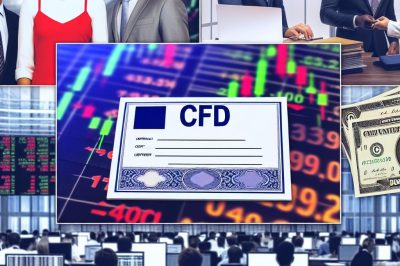Understanding CFD Certificates
Contract for Differences (CFDs) have emerged as a prominent financial instrument, enabling traders to speculate on the price movements of various assets without actually possessing the underlying asset. At the heart of this framework is the CFD certificate, which may be challenging to comprehend in its entirety. A comprehensive understanding of the CFD certificate concept can be initiated by exploring resources such as the CFD Information website, which offers invaluable insights into this dynamic trading mechanism.
What is a CFD Certificate?
A CFD certificate signifies a contractual agreement between two parties, commonly categorized as the buyer and the seller. This contractual document explicitly states that upon the culmination of the contract, the involved parties will exchange the financial difference between the opening and closing prices of the underlying asset. It is imperative to recognize that holding a CFD certificate does not equate to owning the actual asset; instead, it embodies an agreement to pay or receive based on the price fluctuation.
Key Features of CFD Certificates
CFD certificates incorporate several significant features that traders must be acquainted with:
Leverage: A defining characteristic of CFD trading is the application of leverage. This approach allows traders to acquire substantial exposure to a market position with a comparatively modest initial capital investment. While leverage can potentially amplify profits, it is equally capable of escalating potential losses.
Range of Markets: CFDs grant traders access to an extensive selection of markets. Individuals can engage with equities, forex, commodities, and even contemporary assets like cryptocurrencies through CFDs. This breadth of opportunities is one of the reasons CFDs have garnered widespread appeal.
Short Selling: Another advantageous aspect of CFDs is their inherent flexibility to benefit from both ascending and descending market trends. This dual potential is operationalized through the mechanic of short selling, wherein traders can sell a CFD expecting a forthcoming price decline.
Uses and Applications
Primarily, CFD certificates serve as instruments for speculation. Traders leverage these certificates to hypothesize on the potential upsurge or downswing in an asset’s price over brief periods. Additionally, CFDs can adeptly function in hedging strategies, enabling traders to safeguard against unfavorable price movements in their current investment portfolios.
Advantages
The realm of CFD trading is replete with numerous advantages, beginning with the capacity to trade on margin. This characteristic allows traders to manage larger positions compared to their initial capital exposure. Access to diverse and varied markets is another appealing benefit, offering wide-ranging trading opportunities. The capability of executing short selling transactions allows for strategic positioning irrespective of market conditions, thereby enhancing trading flexibility.
Risks
Despite these numerous advantages, CFDs present several risks. The employment of leverage, although advantageous, also has the potential to magnify losses substantially. Moreover, CFDs’ inherent complexity, coupled with market volatility, can contribute to the trading risk landscape. Traders are further susceptible to various incurred costs, such as spreads and financing charges.
Regulation and Oversight
Globally, CFDs are subject to stringent regulatory frameworks designed to safeguard investors’ interests. It is pivotal for traders to collaborate with reputable brokers who adhere to pertinent regulatory standards. Regulatory authorities frequently impose leverage limitations and furnish risk disclosure tools to guarantee transparency and protection within the CFD trading environment.
Conclusion
CFD certificates present a flexible avenue for engaging with financial markets; however, they necessitate meticulous risk management due to their intrinsic risks. Prospective CFD traders should ensure a comprehensive understanding of these instruments’ mechanics and implications. For further edification, potential traders are encouraged to explore resources provided by financial regulatory authorities or seek counsel from seasoned financial advisors. Engaging with reliable information sources enhances the trader’s ability to navigate the complexities of the CFD market effectively.
In conclusion, while CFD certificates represent a modern investment mechanism with numerous benefits, they simultaneously demand an awareness of the inherent risks associated with leveraged financial instruments. As such, aspiring traders must engage in thorough research and ideally seek professional guidance to optimize their trading outcomes.





